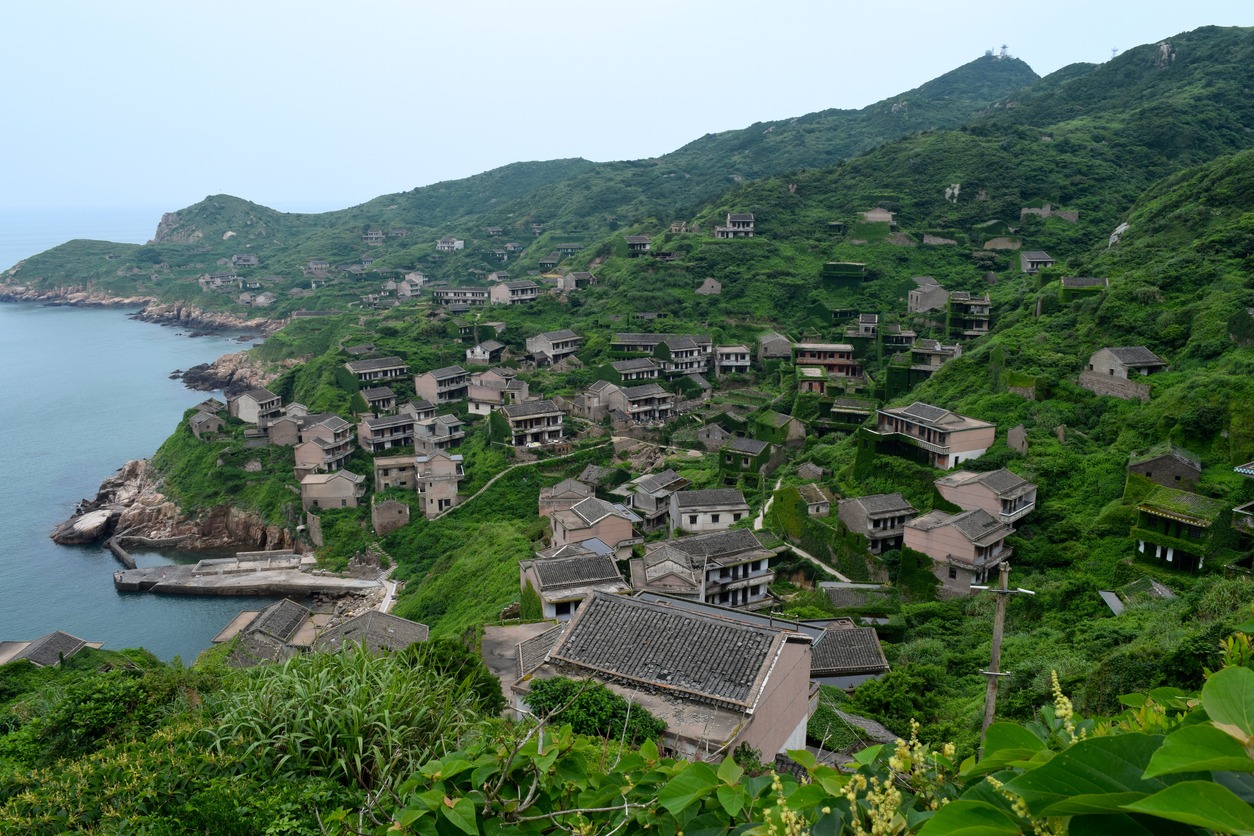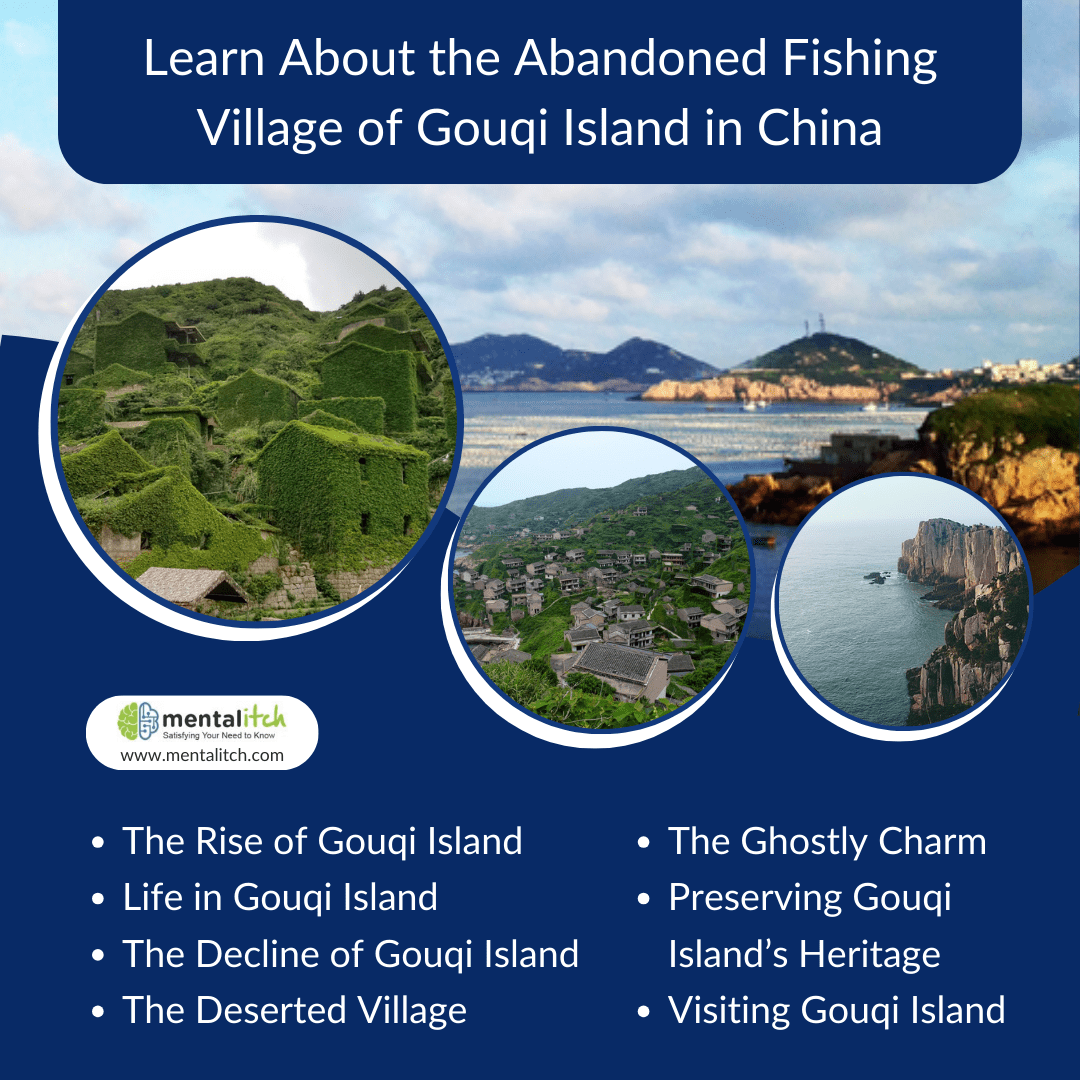China, a land steeped in ancient traditions and modern marvels, is a vast canvas of history and culture. Yet, amid this vastness, lies hidden treasures that are lesser-known but equally fascinating. Among these gems is the enigmatic Gouqi Island, an abandoned fishing village that beckons adventurous souls to delve into its mysteries.
Located off the eastern coast of China, Gouqi Island whispers tales of bygone eras through its decaying houses, empty streets, and the eerie silence that envelopes it. This article is an invitation to embark on a captivating journey, a journey that unravels the secrets of Gouqi Island’s past, traces the path of its decline, and marvels at the haunting beauty that now graces its abandoned shores.
As we delve into the heart of Gouqi Island, we’ll uncover the timeless stories etched in its landscapes and buildings, tales that resonate with the ebb and flow of human endeavor and the relentless forces of nature. Gouqi Island stands as a testament to the cyclical nature of life, where once-thriving communities now echo with the whispers of the past.
The Rise of Gouqi Island
Gouqi Island is part of the Shengsi Archipelago, located in the East China Sea. The island, situated approximately 50 kilometers east of Shanghai, boasts a rich maritime history dating back centuries. Historians believe that the island’s fishing industry can be traced as far back as the Ming Dynasty (1368–1644).
The island’s strategic location and favorable climate made it an ideal hub for fishing communities to thrive. Local fishermen primarily engaged in the harvesting of various seafood, including fish, crabs, and shellfish. Over time, Gouqi Island’s fishing industry flourished, and the island’s population grew, leading to the construction of charming fishing villages and bustling markets.
Life in Gouqi Island
Life in Gouqi Island was characterized by the rhythms of the sea. Fishermen would set out at dawn, returning in the evening with their catch. Women would gather at the markets to sell fresh seafood, and children played along the island’s picturesque beaches.
The village’s architecture reflected its close connection to the sea. Traditional fishermen’s houses were built using local materials, featuring white walls and black tiles, creating a quaint and charming aesthetic. Narrow, winding alleyways led to the shoreline, where fishing boats bobbed in the gentle waves.
The Decline of Gouqi Island
While Gouqi Island once thrived as a bustling fishing community, it began to face challenges that would ultimately lead to its decline. One of the major factors was overfishing. As demand for seafood continued to rise, the waters surrounding the island were overexploited, depleting fish stocks and threatening the livelihoods of the island’s fishermen.
Additionally, economic changes in China led many young people from Gouqi Island to seek opportunities in larger cities, leaving the aging population behind. This demographic shift, combined with the declining fishing industry, caused a population decline in the village. As the younger generation moved away and the elderly population grew, Gouqi Island began to lose its vibrancy.
View this post on Instagram
The Deserted Village
Today, Gouqi Island stands as a hauntingly beautiful testament to its past. As the fishing industry continued to dwindle, the village’s population dwindled as well. Houses and shops, once filled with life, were abandoned. The narrow streets, once bustling with activity, are now overgrown with vegetation, creating a surreal, post-apocalyptic atmosphere.
Exploring the deserted village, visitors can still find remnants of the past. Empty fishing nets hang from decrepit buildings, while the rusted frames of bicycles lay forgotten in the streets. The island’s former residents left behind a poignant reminder of the life they once knew
View this post on Instagram
The Ghostly Charm
While Gouqi Island’s decline may seem tragic, it has also given rise to a unique form of beauty. The juxtaposition of the decaying buildings against the backdrop of the serene coastline creates a haunting and ethereal atmosphere that attracts photographers, artists, and adventurers alike.
The island’s abandoned houses, weathered by time and saltwater, are now often covered in vibrant foliage, offering a striking contrast to their dilapidated state. These scenes have made Gouqi Island a popular destination for urban explorers and filmmakers seeking to capture the haunting allure of its deserted streets.
Preserving Gouqi Island’s Heritage
Recognizing the historical and cultural significance of Gouqi Island, efforts have been made to preserve its heritage. The local government, in collaboration with conservation organizations, has taken steps to protect the island’s historical buildings and natural surroundings.
Restoration projects have begun in some areas, aiming to breathe new life into the old fishing village. These efforts are not only preserving the island’s cultural heritage but also providing opportunities for tourism, as Gouqi Island’s unique charm draws visitors from near and far.
Visiting Gouqi Island
If you are intrigued by the mystique of Gouqi Island and wish to visit, there are several practical considerations to keep in mind:
Getting There:
Gouqi Island is accessible by ferry from Shanghai, which takes approximately three hours. You can also reach it by boat from other nearby islands in the Shengsi Archipelago.
Accommodation:
While the island is home to abandoned houses, accommodations for tourists are available on nearby islands. Shengsi Island, for example, offers a range of lodging options.
Exploring the Island:
Be sure to explore the deserted streets, photograph the striking scenes, and take in the natural beauty of the coastline. However, always respect local regulations and be mindful of the fragile environment.
Gouqi Island, with its abandoned fishing village, stands as a poignant reminder of the interplay between human endeavor and the forces of nature. Its rise and fall mirror the cycles of life and change that have shaped China’s coastal communities for centuries.
Conclusion
Visiting Gouqi Island not only allows us to witness the eerie beauty of a once-thriving village frozen in time but also reminds us of the importance of sustainable practices to protect the delicate ecosystems that support these communities. As efforts to preserve and revitalize Gouqi Island continue, it serves as a beacon of hope for the preservation of similar historical and cultural sites around the world.
While reading about the hauntingly beautiful abandoned fishing village on Gouqi Island, it’s fascinating to think about how China’s history has been shaped by figures like Qin Shi Huang, the country’s first emperor. His efforts to unify China laid the groundwork for the nation’s expansive history, touching even the most remote places. Take a moment to read our post on Why Is Qin Shi Huang Considered China’s First Emperor?


